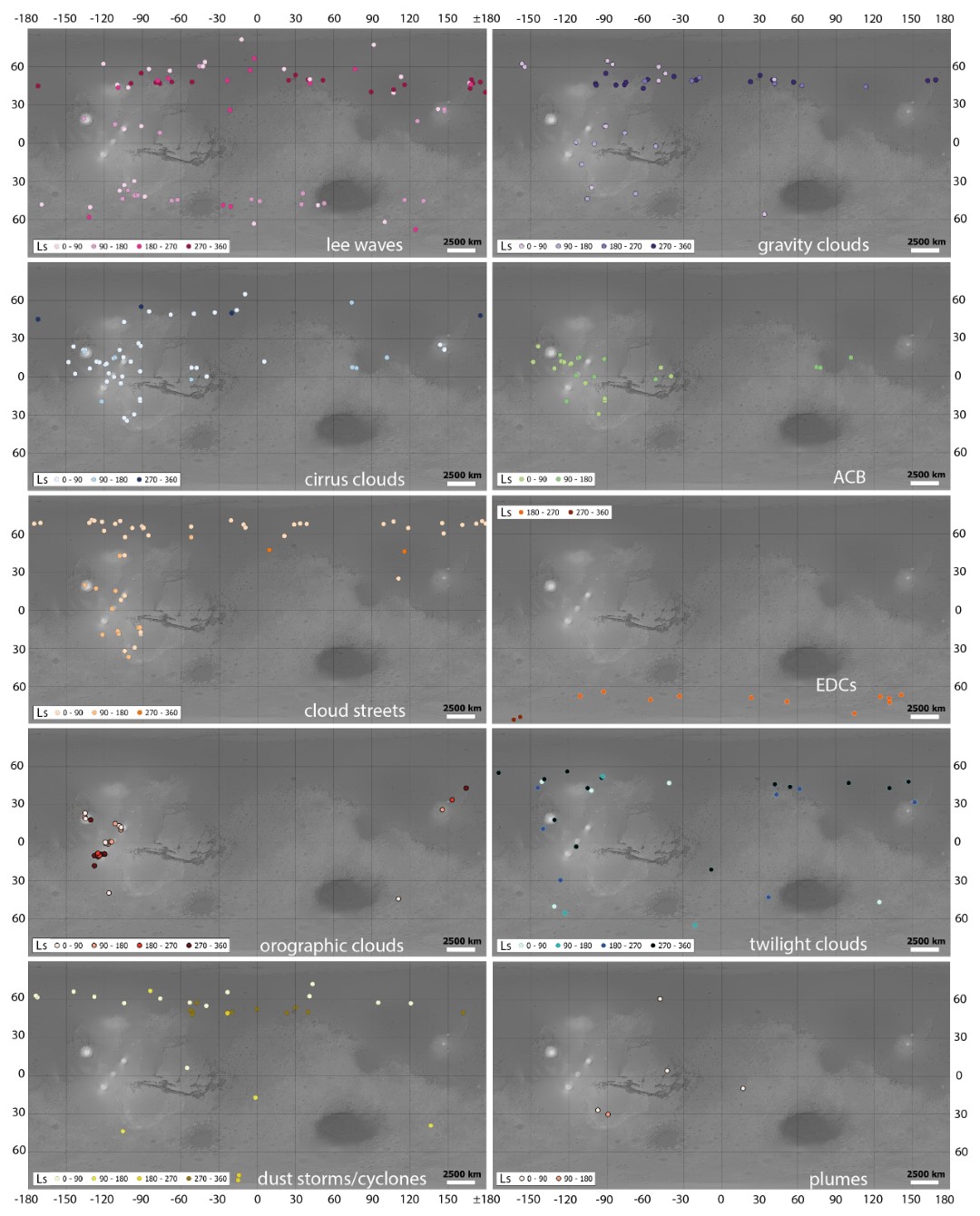Clouds and Storms as seen by HRSC - A catalogue of atmospheric phenomena on Mars
- 1German Aerospace Center (DLR), Institute of Planetary Research, Berlin, German
- 2Instituto de Astrofísica e Ciências do Espaço, Lisboa, Portugal
- 3Faculdade de Ciências da Universidade de Lisboa, Portugal
- 4Laboratoire de Météorologie Dynamique, Sorbonne Université, Paris, France
- 5Universidad del País Vasco UPV/EHU, Bilbao, Spain
- 6Institut Astrophysique Spatiale, CNRS, Paris-Saclay University, France
- 7LATMOS/IPSL, Sorbonne Université, UVSQ Université Paris-Saclay, CNRS, Paris, France
Due to the elliptical orbit of the Mars Express (MEX) spacecraft, its High Resolution Stereo Camera (HRSC [1]; spectral range 0.395-1.015 µm) can not only take surface observations from low altitude (near periapsis) to map the planet at the highest possible resolution (12.5 m/px), but also capture observations from higher altitudes at lower resolution (200 – 800 m/px, depending on observation altitude), covering much larger parts of the surface with a typical field of view from limb to limb. These high-altitude observations are ideal for observing atmospheric phenomena on Mars. After more than 20 years of the MEX mission, an extensive amount of image data on atmospheric phenomena on Mars has been accumulated, which has a great potential for scientific exploitation.
We have visually analyzed all HRSC high-altitude observations with respect to atmospheric phenomena such as clouds of different types, dust storms, cyclones, dust lifting events and other features, and compiled a database that should provide easy access to the information on what kind of phenomena can be found in which HRSC image. We have classified the different cloud types, compiled useful additional information and parameters (metadata), and analyzed the occurrence of each feature/event with respect to seasons and geographical locations. In a next step, this information will be used for further scientific applications such as spectral characterization of cloud compositions, cloud/wind speed and direction measurements, cloud height estimates and the analysis of the physical mechanisms behind the phenomena.
We will present our first results of this project and introduce the database, show examples of observed feature types and morphologies, present maps of the occurrence of phenomena on Mars and give examples of scientific applications.
[1] Jaumann, R., et al., 2007. The high-resolution stereo camera (HRSC) experiment on Mars Express: Instrument aspects and experiment conduct from interplanetary cruise through the nominal mission. Planetary and Space Science 55, 928-952.

Fig. 1: Current status of the database entries showing the occurrence of the respective cloud types and storm events by geographic location and season. (ACB = Aphelion Cloud Belt; EDC = Elongated Dust Clouds; background: blended HRSC/MOLA DTM and shaded relief)
How to cite: Tirsch, D., Machado, P., Brasil, F., Hernández-Bernal, J., Sánchez-Lavega, A., Carter, J., Montmessin, F., Hauber, E., Matz, K.-D., and Nair, A.: Clouds and Storms as seen by HRSC - A catalogue of atmospheric phenomena on Mars , Europlanet Science Congress 2024, Berlin, Germany, 8–13 Sep 2024, EPSC2024-44, https://doi.org/10.5194/epsc2024-44, 2024.